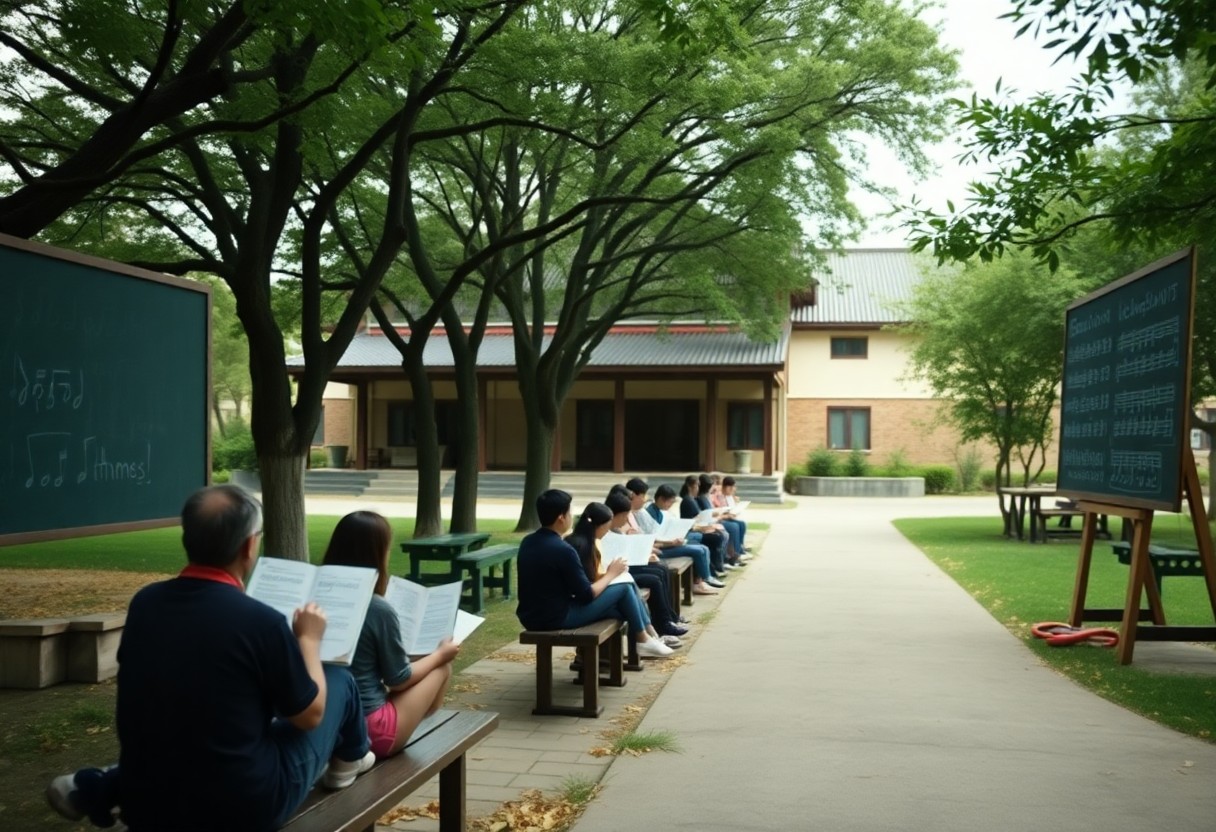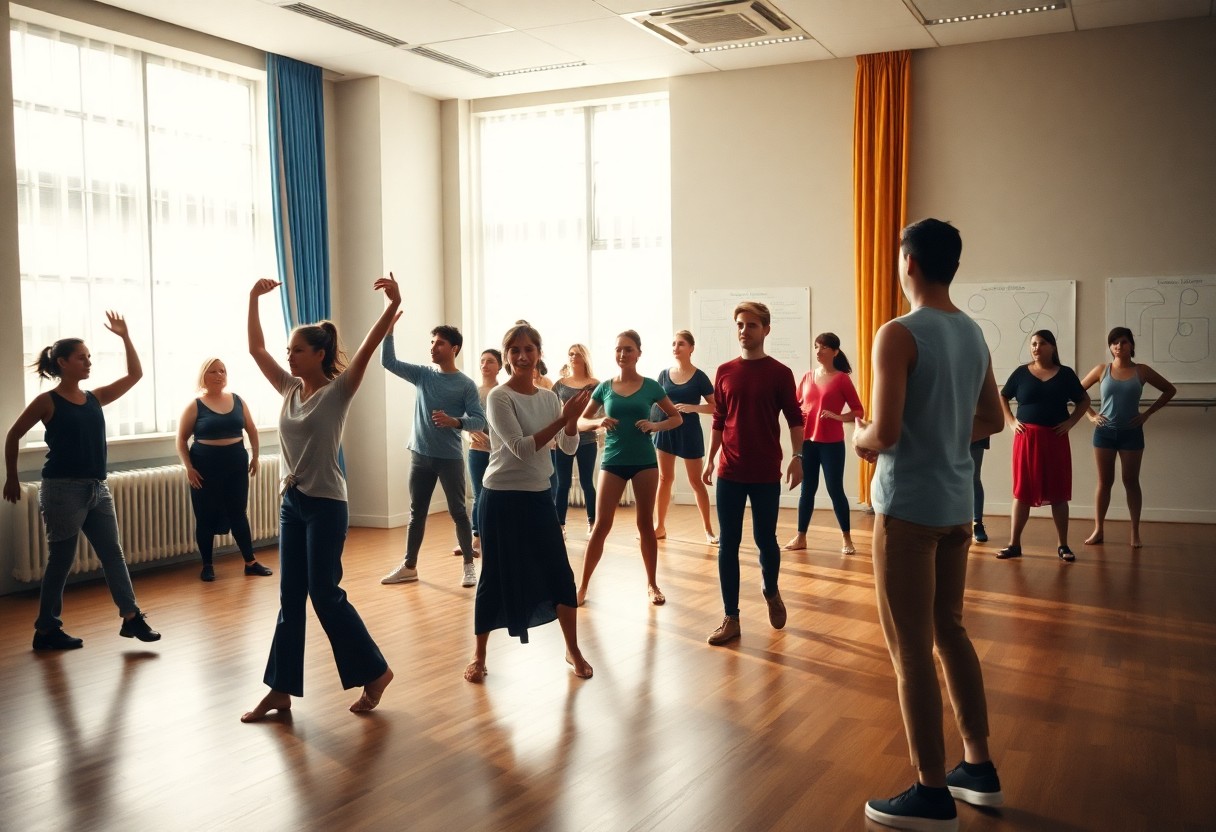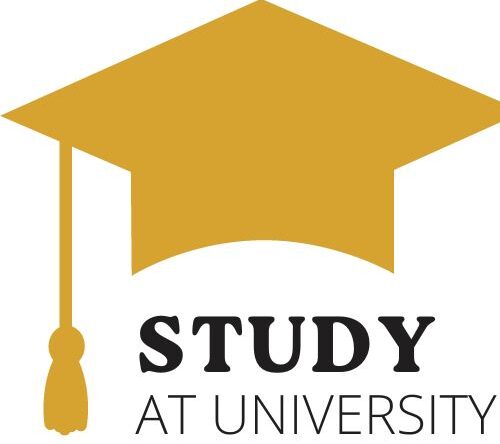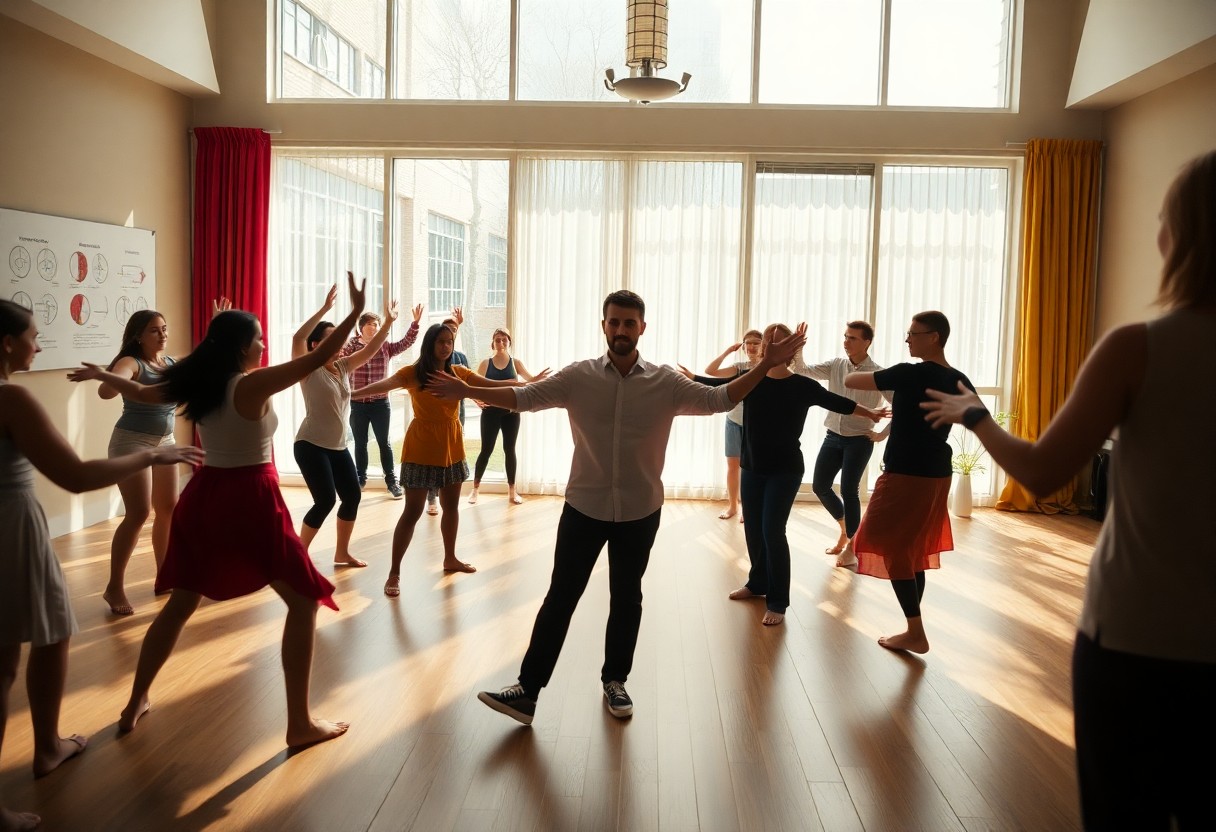Just imagine mastering the art of Eurythmics, a dynamic blend of movement and music that enhances your expressive abilities. In this post, you will explore the significance of the Master of Eurythmics (M.Eur.) degree, its core curriculum, and the skills it cultivates, enabling you to engage deeply with the world of artistic expression. Whether you’re a prospective student or simply curious about this unique discipline, understanding its benefits can illuminate your path in Eurythmics.
Key Takeaways:
- The Master of Eurythmics (M.Eur.) program focuses on the art of movement and its expressive qualities, combining principles of music, language, and physicality.
- This graduate-level degree emphasizes personal development, artistic expression, and pedagogical skills, preparing students to teach eurythmy in various educational settings.
- Participants engage in practical training as well as theoretical studies, fostering a deep understanding of the connection between movement and the human experience.
The Unique Philosophy of Eurythmics
Eurythmics embodies a unique philosophy that interlaces artistic expression with educational development, stressing the importance of movement as a means of understanding and embodying music and speech. This holistic approach encourages you to explore the nuances of rhythm, melody, and language through your physical body, making the learning process deeply engaging and interactive. Eurythmics transcends traditional pedagogical strategies, integrating art with an understanding of human development and creativity that resonates through every aspect of your life.
The Aesthetic and Spiritual Dimensions
The aesthetic and spiritual dimensions of Eurythmics invite you to connect deeply with your inner self and the surrounding world. By engaging in movement that reflects musical and linguistic elements, you tap into a creative energy that nurtures both emotional and spiritual growth. This practice cultivates an appreciation for beauty, harmony, and balance, fostering a sense of community and connection with others as you express these artistic elements together.
Integrating Movement with Learning
Integrating movement with learning in Eurythmics enhances cognitive development and retention of information. Research indicates that physical activity can boost brain function, enabling you to grasp complex concepts more effectively. Eurythmics encourages you to navigate abstract ideas through tangible movement, making subjects like mathematics, language, and the arts more accessible and engaging. Through rhythmic exercises and expressive gestures, you foster a loving connection to learning that nurtures creativity and intellect simultaneously.
This integration of movement and learning transforms the educational experience into a lively exploration. By physically embodying concepts, you learn to grasp what might be difficult to articulate through traditional methods. For instance, in a lesson about geometric shapes, moving through the space to enact those forms not only solidifies understanding but also imprints the knowledge on your body. Such practices make every lesson dynamic and memorable, inspiring you to explore learning not just as a task, but as an exciting adventure.

Training Pathways: From Aspiration to Accreditation
Your journey to earning a Master of Eurythmics (M.Eur.) begins with understanding the diverse training pathways available, tailored to suit different needs and goals. These programs typically blend theoretical instruction with practical application, allowing you to seamlessly transition from student to accredited professional. Institutions often offer flexible study schedules, accommodating both full-time and part-time learners, ensuring that you can pursue your passion while balancing other commitments.
Curriculum Breakdown: Core Components of M.Eur. Programs
The Role of Practicum and Performance in Skill Development
Engaging in practical experiences and performances is important to your development as an Eurythmist. Practicum sessions provide opportunities to apply theories and techniques learned in class, while performances allow you to showcase your skills in real-world settings. This direct application reinforces your learning, cultivates confidence, and sharpens your ability to connect with audiences.
Diving deeper into practicum and performance highlights their significance in transforming your theoretical knowledge into practical artistry. During these sessions, you’ll participate in workshops, collaborate with peers, and receive mentorship from experienced professionals, enabling you to refine your technique and performance style. Whether performing in community settings or at formal events, the feedback and experiences gained will enhance your interpretive skills, ensuring you can express the nuances of Eurythmics powerfully and authentically.
Eurythmics in Educational Contexts
Your journey through Eurythmics can unlock profound educational benefits, reshaping how learners of all ages engage with music and movement. In classrooms, Eurythmic practices foster creativity, enhance rhythmic skills, and promote social interaction. By integrating artistic movement into curricula, you can cultivate a holistic learning environment that nurtures emotional and cognitive development, empowering students to express themselves in new and meaningful ways.
Transformative Impacts on Early Childhood Education
Integrating Eurythmics into early childhood education allows you to create dynamic learning experiences that lay a strong foundation for emotional intelligence and motor skills. Children engaged in Eurythmic activities exhibit improved perceptual-motor coordination, heightened awareness of body movements, and increased spatial orientation. These elements are vital in supporting children’s overall development during these formative years.
Exploring Eurythmics in Special Needs and Therapeutic Settings
Eurythmics offers unique therapeutic benefits in special needs and clinical settings, ensuring that individuals with varying abilities can express themselves through movement and sound. Tailored Eurythmic exercises address specific challenges, promoting inclusivity and personal growth.
Eurythmics serves as an effective tool in special needs and therapeutic contexts by connecting individuals with their bodies and emotions. Research indicates that engaging in movement-based therapies significantly improves communication skills, body awareness, and emotional regulation among children with autism spectrum disorders. One case study highlighted progress in social interaction among non-verbal children after just a few Eurythmic sessions. Leveraging these holistic approaches emphasizes the importance of individualized experiences, allowing you to facilitate meaningful connections and growth for those with diverse needs.

The Global Landscape of Eurythmics: Trends and Innovations
The practice of Eurythmics is experiencing a transformative evolution across the globe, influenced by diverse artistic interpretations and pedagogical advancements. The integration of contemporary methods in movement and rhythm is enriching traditional approaches, showcasing an impressive array of performances and educational formats that cater to varied audiences. As communities embrace this art form, it continues to garner interest, fostering connections between cultures and redefining its relevance in today’s artistic milieu.
Notable Programs and Educational Institutions Leading the Charge
Programs such as the Eurythmy School of the Rudolf Steiner University and the Eurythmy Academy in England exemplify excellence in this field, attracting aspiring practitioners from around the world. These institutions emphasize an interdisciplinary approach, combining movement, music, and speech to cultivate a holistic learning experience. Graduates from these programs often emerge with innovative ideas that propel the art form into new territories, enhancing global appreciation and understanding of Eurythmics.
The Influence of Digital Platforms on Eurythmic Practice
Digital platforms are reshaping the landscape of Eurythmics by expanding accessibility and reaching diverse audiences. Educational videos, online courses, and virtual performances enable practitioners to share their craft far beyond traditional venues. This shift not only democratizes access to learning Eurythmics but also encourages experimentation with new forms of expression. With the help of social media, these revolutionary changes promote community interaction and inspire fresh dialogue around this unique art form.
Platforms such as YouTube and Instagram serve as powerful tools for Eurythmists to showcase their work. Many practitioners are producing content that blends instructional videos with performance art, appealing to both seasoned individuals and newcomers. Online workshops have also become increasingly popular, bringing together global participants who may have never had the opportunity to engage with Eurythmics in person. This surge in online engagement allows for greater creativity, enabling artists to involve technology in their performances, thus transforming how Eurythmics is perceived and practiced worldwide.
The Future of Eurythmics: Opportunities and Challenges
As Eurythmics continues to evolve, it faces both exciting opportunities and significant challenges on the horizon. The increasing demand for holistic, movement-based therapies in education and wellness presents a unique potential for practitioners to adapt and expand the reach of Eurythmics. However, navigating the integration of technology and addressing misconceptions about its benefits will require innovative thinking and collaboration among educators, practitioners, and institutions.
Bridging Traditional Practices with Contemporary Relevance
Integrating traditional Eurythmic practices with modern artistic expressions allows you to breathe new life into this time-honored discipline. By exploring partnerships with contemporary artists and choreographers, you can create innovative performances that resonate with diverse audiences, fostering a deeper understanding and appreciation of Eurythmics in today’s cultural landscape.
Advocating for Eurythmics in Modern Education Systems
Promoting Eurythmics within educational settings requires strategic advocacy for its inclusion in curricula. This involves showcasing the benefits of movement as a vital component of education, supporting cognitive development, social engagement, and emotional well-being. Building alliances with educational stakeholders can provide a platform for sharing success stories and pedagogical methods that highlight how Eurythmics enriches learning experiences.
Your efforts to advocate for Eurythmics can transform modern education systems by presenting evidence-based research and case studies that demonstrate its positive impact. For instance, recent studies show that integrating Eurythmics in classrooms significantly enhances students’ concentration and social skills. By organizing workshops, presentations, and collaborative projects with educators and administrators, you can illustrate Eurythmics’ value in fostering a well-rounded approach to education that nurtures both the mind and body. Engaging local communities and fostering open dialogue can further strengthen the case for Eurythmics as an vital part of a holistic educational framework.
To wrap up
Ultimately, pursuing a Master of Eurythmics (M.Eur.) offers you a unique blend of artistic and therapeutic skills that can enrich your career and personal development. By engaging deeply with movement, music, and the spoken word, you will not only enhance your creative expression but also gain tools to foster emotional and social connection in your community. This advanced degree equips you to take on diverse roles in education, therapy, and performance, helping you make a meaningful impact in the lives of others while nurturing your own artistic journey.

